- October 20, 2023
How Do I Keep My Cat From Using the Dog Door? 10 Effective Tips
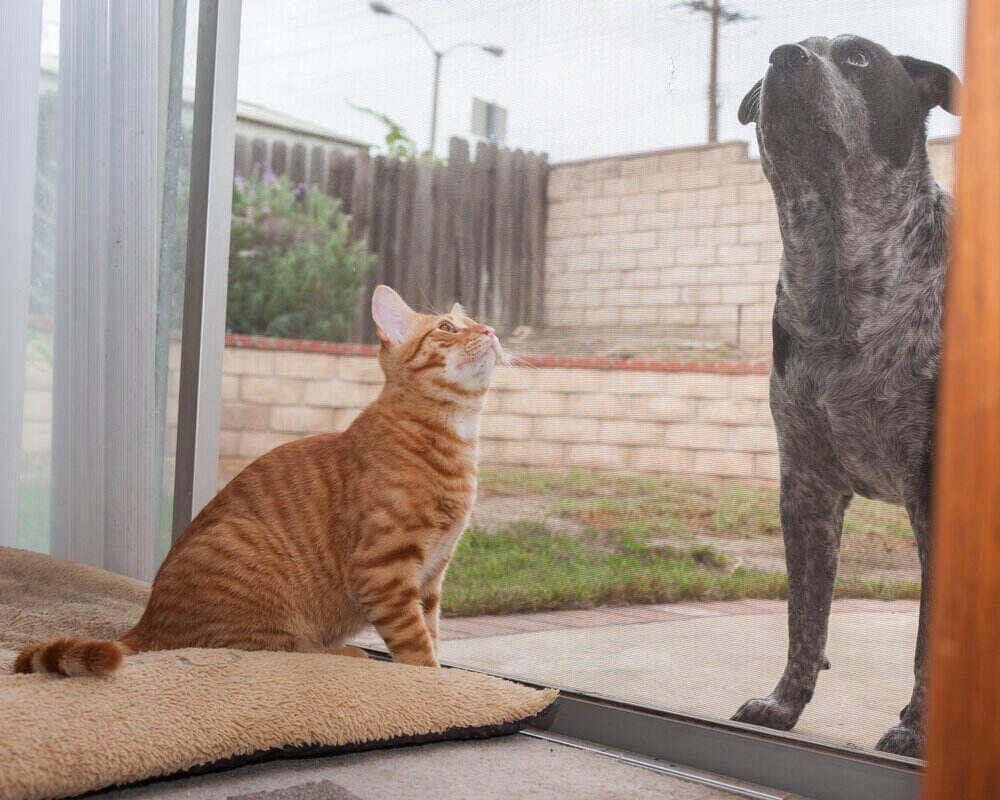
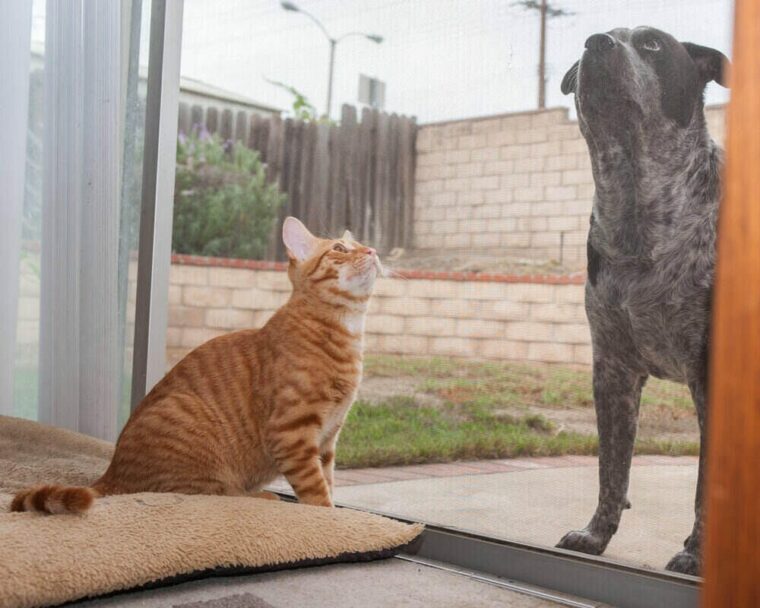
Welcoming a dog into your home usually comes with some necessary adjustments. One of those may include installing a dog door for easy access to the yard. But what happens when your feline friend decides to use the dog door as their gateway to the world?
If you’re scratching your head over this, don’t worry! We’ve got you covered. We’re sharing 10 tried-and-tested tips to keep your cat from treating the dog door like their personal portal.

Top 10 Tips to Keep Your Cat From Using the Dog Door
1. Spray Citrus Scents
Cats are not fans of citrus. Their olfactory system is highly sensitive, and the strong smell of citrus is often overwhelming and unpleasant to them. You can probably see where we’re going with this. Use their aversion to citrus to your advantage!
By using a cat-safe citrus spray around the dog door, you effectively set up a scented barrier. Regularly reapply the spray to maintain its potency, and over time, your cat may associate the area with the undesirable smell, steering clear of it.
When choosing a spray, ensure it is non-toxic and safe for all pets. Natural citrus oils diluted in water can often do the trick, but always make sure the concentration isn’t too strong, as this could irritate your cat’s nose or skin.
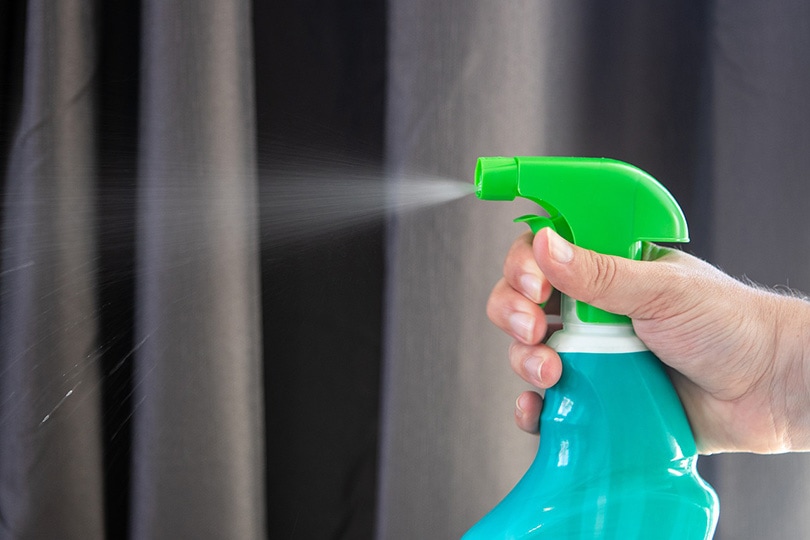
2. Lock the Pet Door Flap
Cats are creatures of habit. They often stick to routines, especially when it comes to their sneaky endeavors. Paying attention to your cat’s patterns and timings can offer valuable insight into when they are most likely to make an outdoor dash.
Once you’ve identified these peak periods, you can proactively lock the pet door flap. Nighttime is a common favorite for many cats due to their nocturnal nature, so it’s always a safe bet to lock the flap during those hours.
By doing this, you not only ensure your cat’s safety but also instill a routine. And it’s through the incorporation of this routine that gradually teaches them that certain times are off-limits. But you must be consistent. The moment your cat discovers that the flap is only locked on some nights, it will go right back to attempting escape.
3. Lay Down Aluminum Foil
At first glance, aluminum foil might seem like an odd choice. However, this shiny kitchen staple can be a secret weapon in your cat deterrent arsenal. The unique texture and sound of foil are often unsettling to cats.
When they step on it, the crinkly sensation and noise can be off-putting, making them second-guess their path. To maximize its effectiveness, ensure the foil is spread out evenly in front of the dog door, covering a wide enough area so the cat can’t easily step over or around it.
You might also consider taping the edges down to prevent it from being moved. Over time, this consistent negative association with the foil can make your cat lose interest in approaching the dog door altogether.
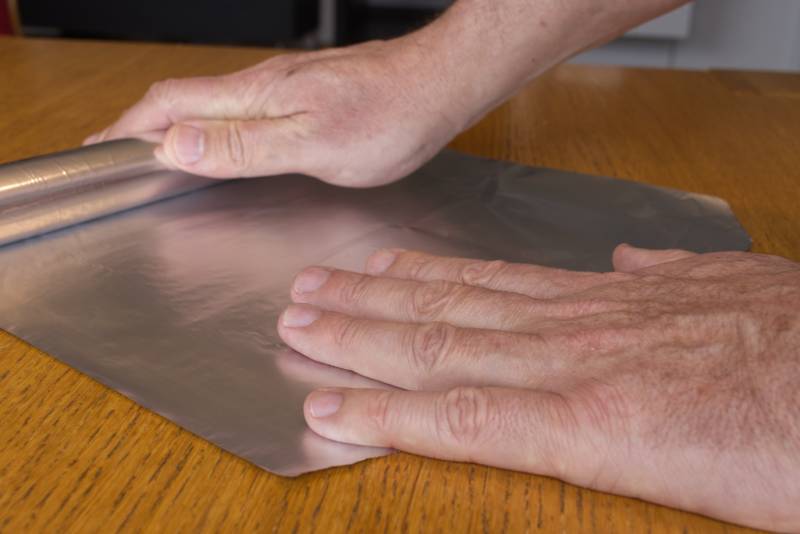
4. Train Your Cat
“Me? Train my cat?” If that’s what you’re saying to yourself, indeed, some cats are more trainable than others. And training yours might be out of the realm of possibility. If that’s the case, feel free to try one of our other tips.
But if you have a cat that’s more adept at training, this could be your golden ticket. Begin by observing your cat’s behavior around the dog door. Are they curious? Do they try to use it frequently? Armed with this knowledge, you can introduce positive reinforcement.
When your cat approaches the dog door, use a command like “sit” or “stay”. Reward their compliance with a treat or affection. Over time, with consistency, your cat will begin to understand that obeying these commands yields rewards.
5. Try Motion Deterrent
You can find a plethora of smart gadgets designed to make pet ownership smoother and more manageable, and one such device is the motion-sensing deterrent. How does it work? These gadgets come equipped with sensors that can detect movement in a specified area, like the vicinity of your dog door.
Upon detecting movement, they react by releasing a harmless spray or sound, startling your cat just enough to make them rethink their decision to approach the door. The beauty of this deterrent is its consistency; every time your cat nears the dog door, it receives the same response, making this a powerful tool for behavior conditioning.
Over a period, the association of the dog door with an unexpected spritz will discourage most cats from trying their luck. If you’re considering this option, research different models to find one that suits your needs and is pet-friendly.
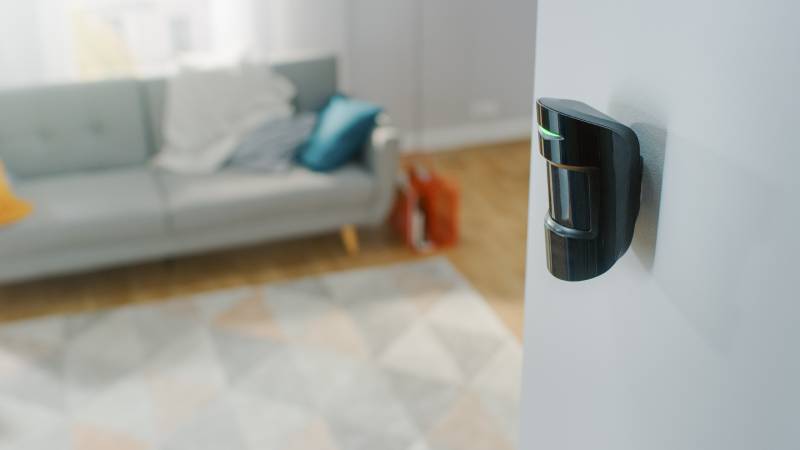
6. Utilize Scat Mats
Scat mats are a more assertive deterrent, reserved for cats that simply won’t take “no” for an answer. These mats are designed to deliver a gentle static shock when stepped on, which is enough to surprise and deter most pets.
By placing a scat mat in front of the dog door, you create a boundary that your cat will think twice about crossing. It’s essential to ensure that the static shock is mild and not harmful. Over time, the association between the mat and the mild discomfort will make the area around the dog door less appealing.
With persistence, you can get your cat to go elsewhere for adventuring. Eventually, you can remove the scat mat altogether. The key is to get your cat to associate the area in front of the dog door with a no-fly zone.
7. Make Indoor Life Exciting
A stimulated cat is a happy cat! Often, the allure of the outdoors stems from a lack of engagement indoors. So, how can you combat this? It’s easy; just introduce a variety of toys and activities to keep your kitty busy.
Puzzle feeders, laser toys, and feather wands can captivate their interest for hours. Cat trees and climbing shelves provide them with vertical spaces to explore and perch, mimicking the high vantage points they’d seek outdoors.
Moreover, regular play sessions and interaction can strengthen your bond with your cat and keep them mentally stimulated. When your home is a playground, the world outside becomes less tempting.

8. Switch to Heavy-Duty
Choosing the right dog door is essential to keep your cat at bay. A heavy-duty door serves multiple purposes. First, its sturdy design can stand up to frequent use without wearing out. Second, the weight of the flap is often enough to deter most cats from trying to push through.
But here’s a thing about cats: they’re opportunistic. If they see the dog making an entrance or exit, they may attempt to quickly tailgate, making a quick escape or entry. Therefore, while a heavy-duty door is a good first step, it shouldn’t be your only line of defense.
To bolster this method, consider adding supplementary deterrents. This might include scent deterrents, visual barriers, or training efforts. The more layers of deterrence you have, the more discouraged your cat might become.
9. Increase the Magnet Strength
Many modern pet doors come with a feature that allows owners to adjust the magnet strength. By increasing this strength, the door flap becomes more challenging to push through. While a larger dog might not find it difficult, a smaller, lightweight cat will likely struggle.
This difficulty can act as a deterrent in itself. Additionally, a stronger magnet ensures the flap returns to its closed position quickly, reducing the chance of a sneaky cat tailgating behind a dog. Another perk?
A flap sealed tightly and reinforced with a robust magnet is great for preventing undesirable drafts and ensuring your home remains well-insulated. If you live somewhere that often gets severe weather, this approach can help keep out rain and snow, too.
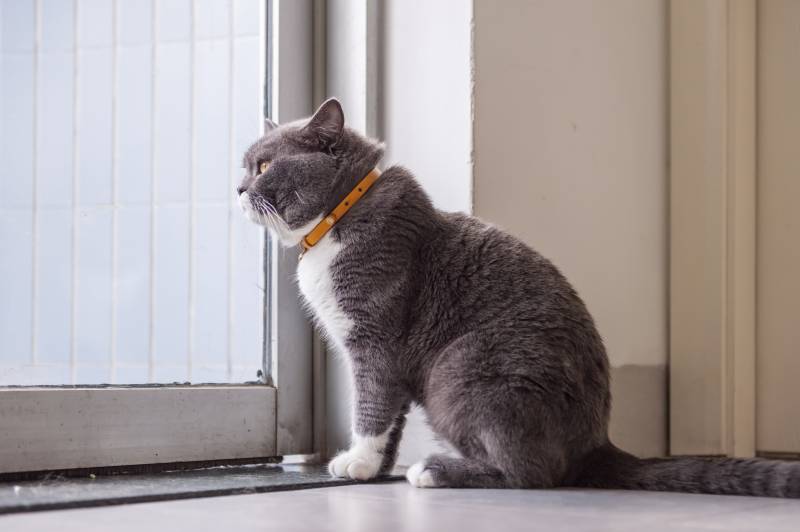
10. Confine to Another Room
Sometimes, despite all efforts, a cat’s curiosity can be insatiable. In such cases, a temporary confinement might be necessary. Select a room stocked with their favorite toys, a cozy resting spot, water, and a litter box.
Make sure this room doesn’t have any access points to the dog door. This measure isn’t a punishment but rather a way to keep your persistent feline safe. Once the high-risk times have passed and the dog door is securely locked, you can let your cat roam freely.
We need to point out that you never want to use confinement as punishment. There are far more effective ways to deal with bad behavior. You want the confinement room to be a place your cat enjoys going to, not dreads.

Conclusion
Dog doors offer great convenience for both you and your pup. Unfortunately, introducing one to your home can inadvertently become a gateway for your feline friend. But that doesn’t mean it has to stay that way! With our solutions, you can effectively dissuade your cat from using the dog door.
Featured Image Credit: Jon Osumi, Shutterstock
Tags
What do you think?
Related Articles

New Puppy Checklist: Gear You’ll Need for Your New Dog
Getting a new puppy is really exciting, but before you welcome them home, it’s important to prepare your space for them. Since puppies need a

How Big Do Mini Poodles Get? Vet Reviewed Average Weight & Growth Chart – Dogster
The information is current and up-to-date in accordance with the latest veterinarian research. Learn more » When you buy a Miniature Poodle, you might not

Can Police Dogs Smell Nicotine? Vet Verified Facts & Info – Dogster
The information is current and up-to-date in accordance with the latest veterinarian research. Learn more » While cigarette sales have been declining steadily for decades,

How Old Is 5 in Dog Years? Vet-Approved Guide to Each Size of Dog – Dogster
The information is current and up-to-date in accordance with the latest veterinarian research. Learn more » A common method for calculating a dog’s age is

